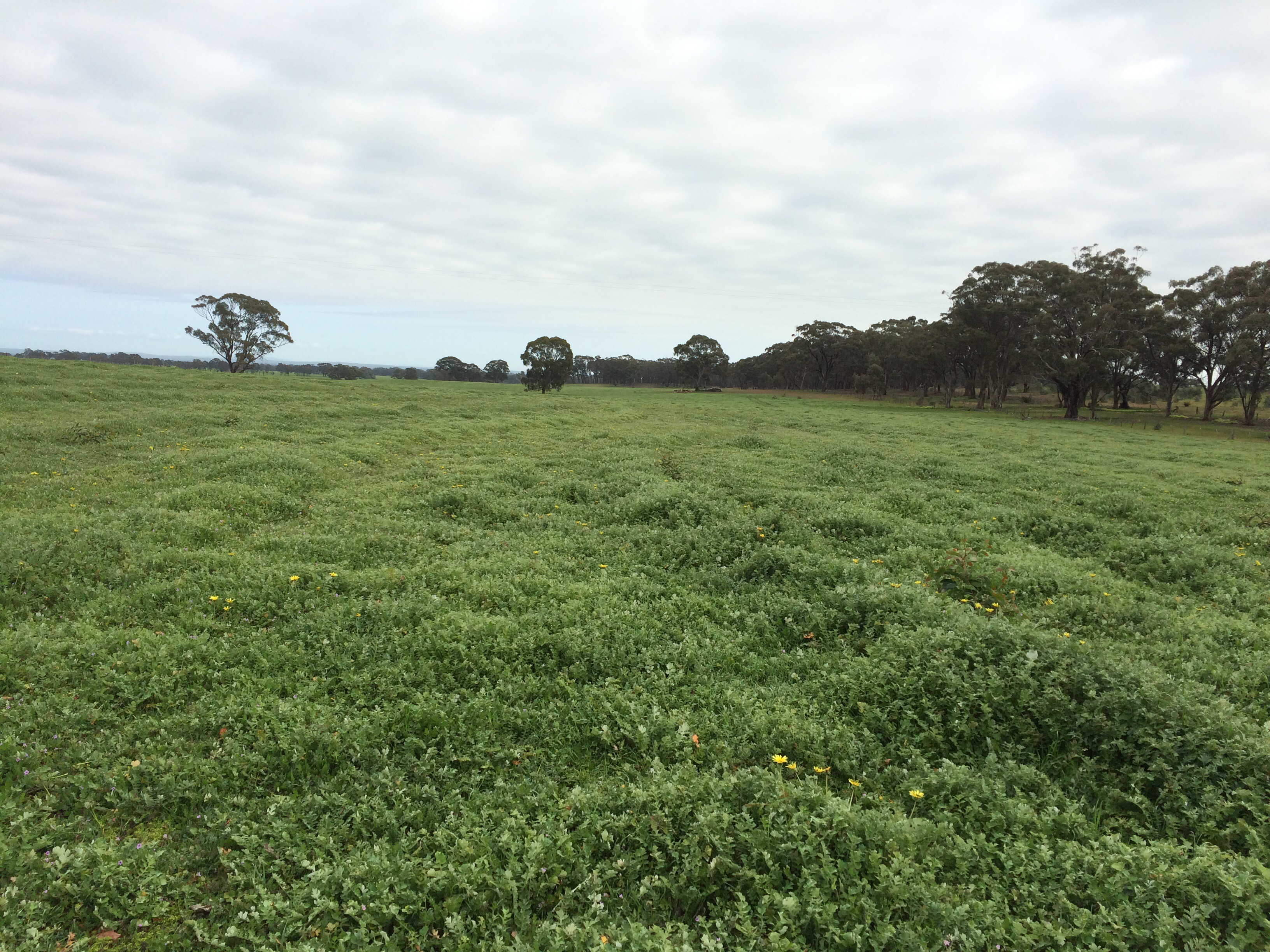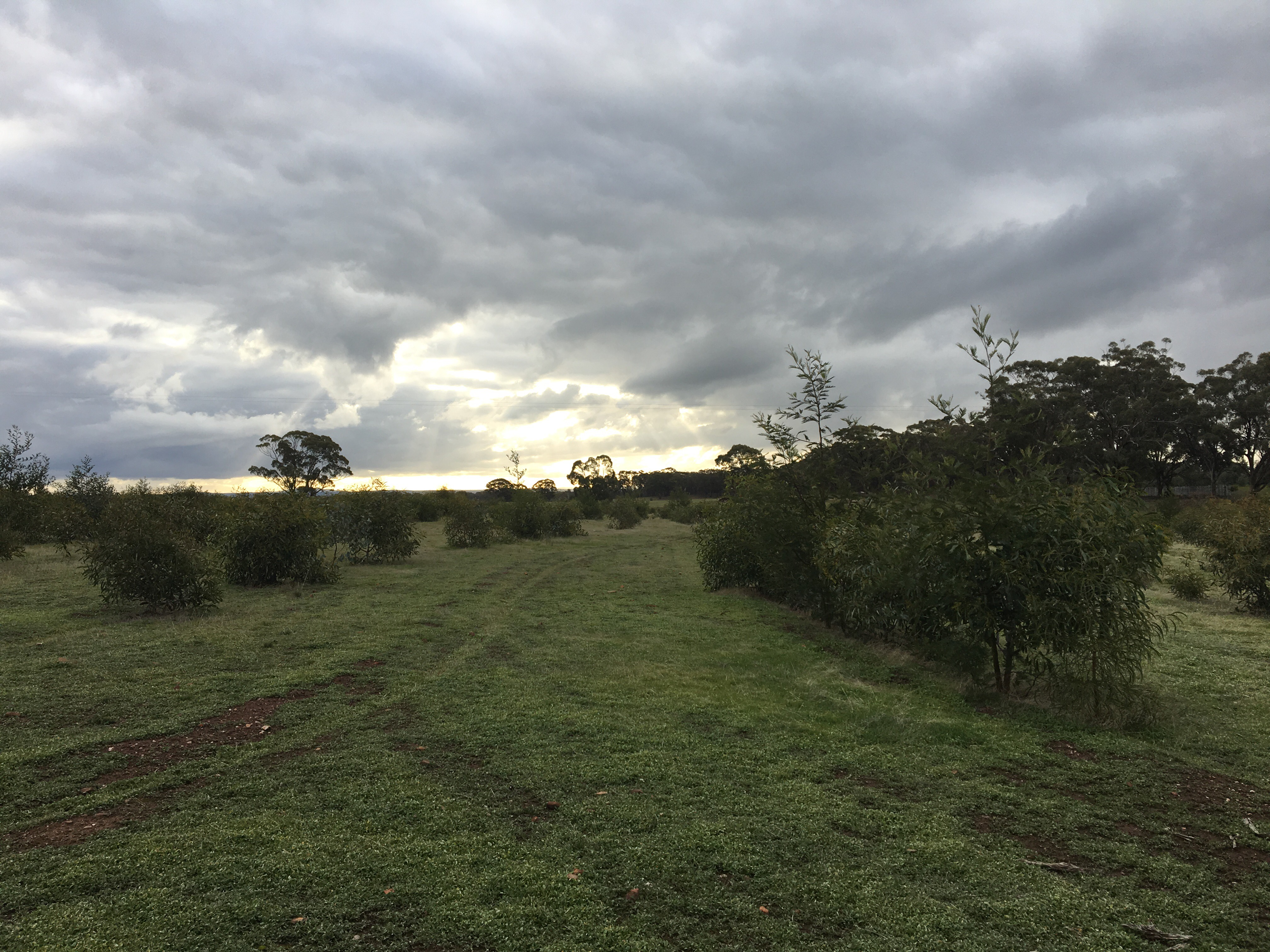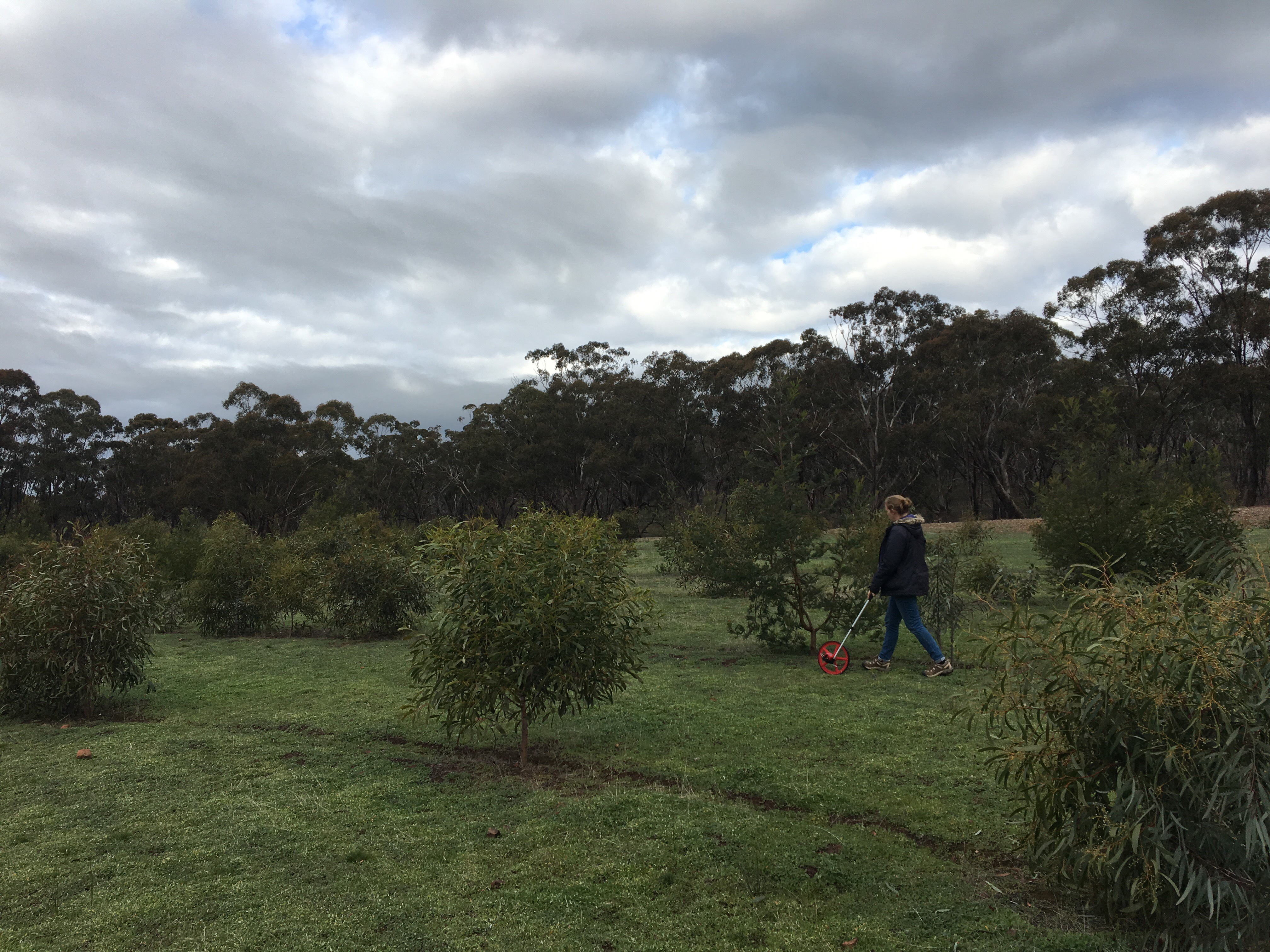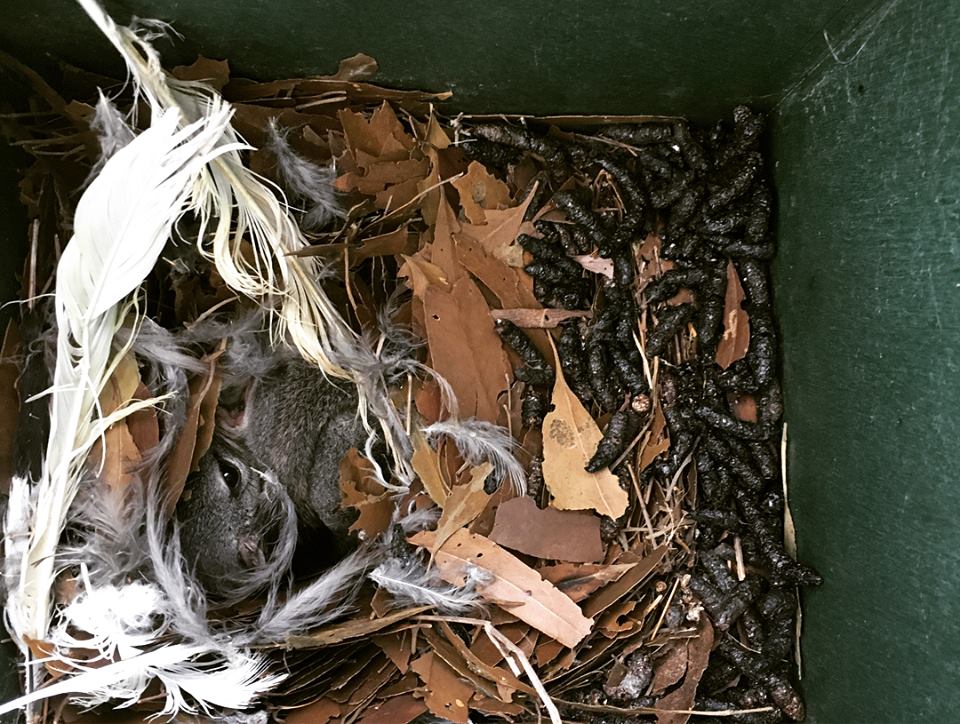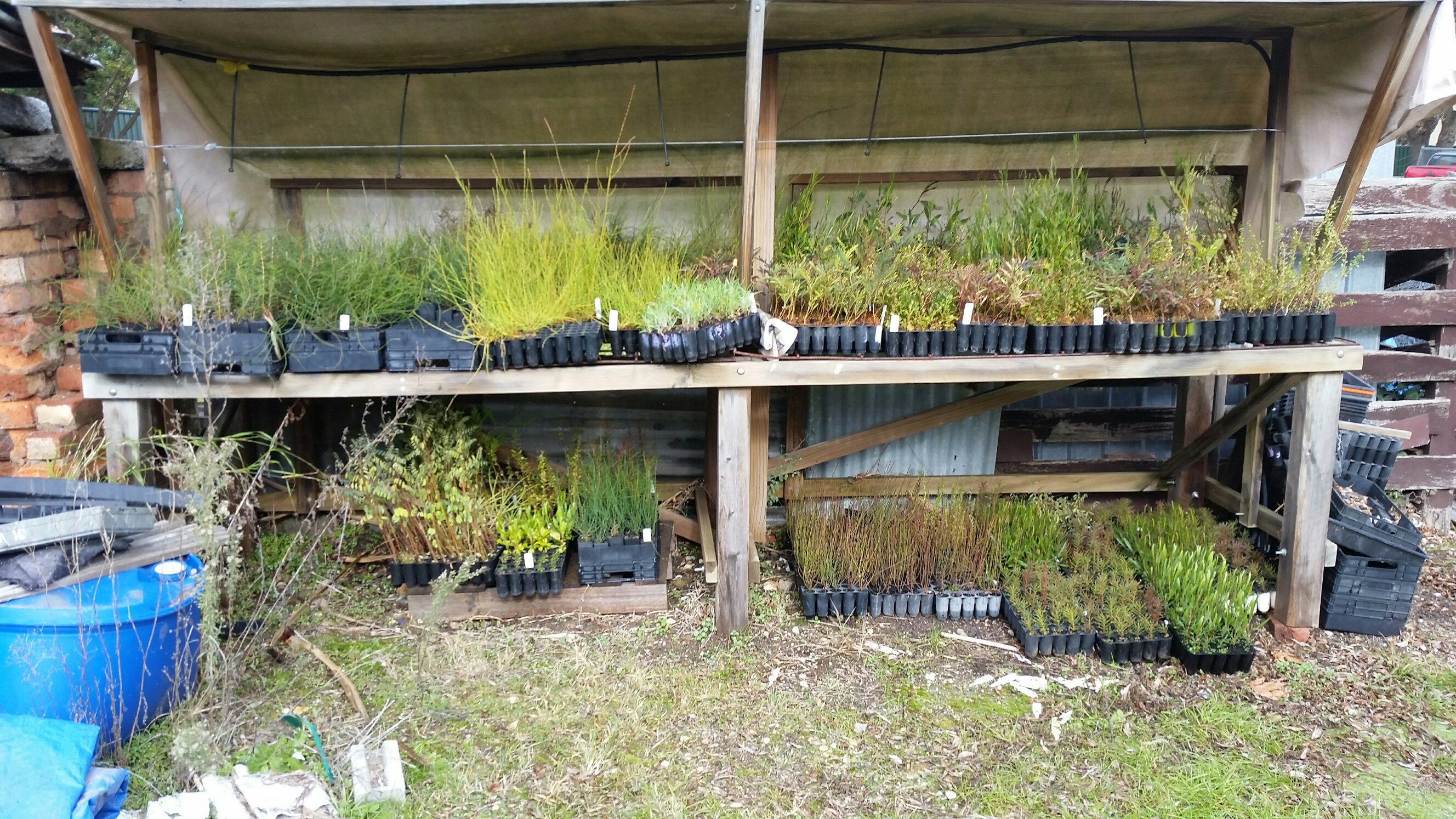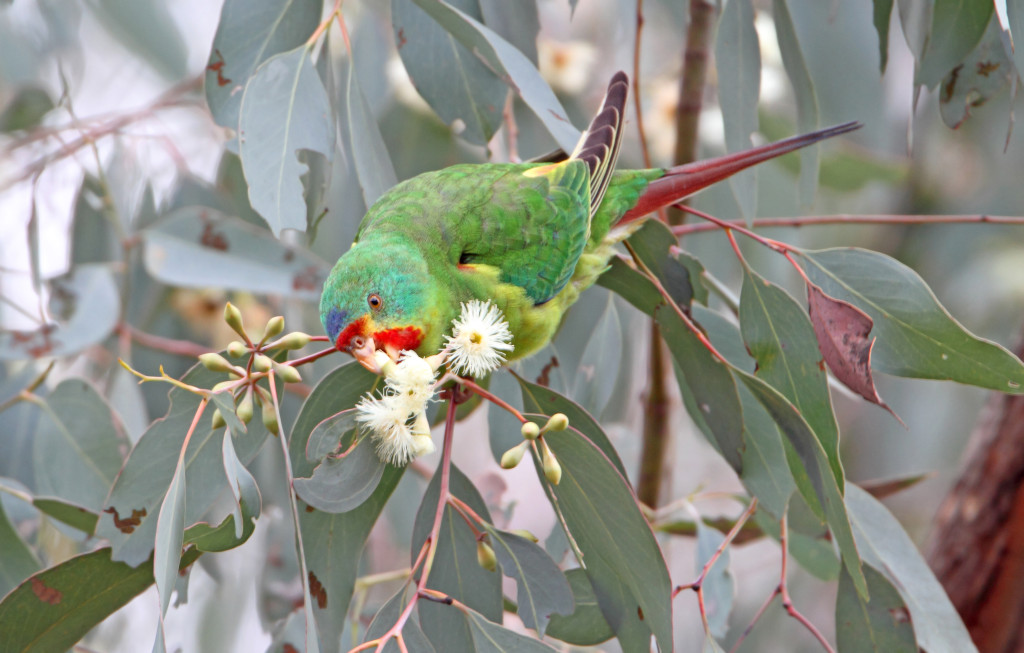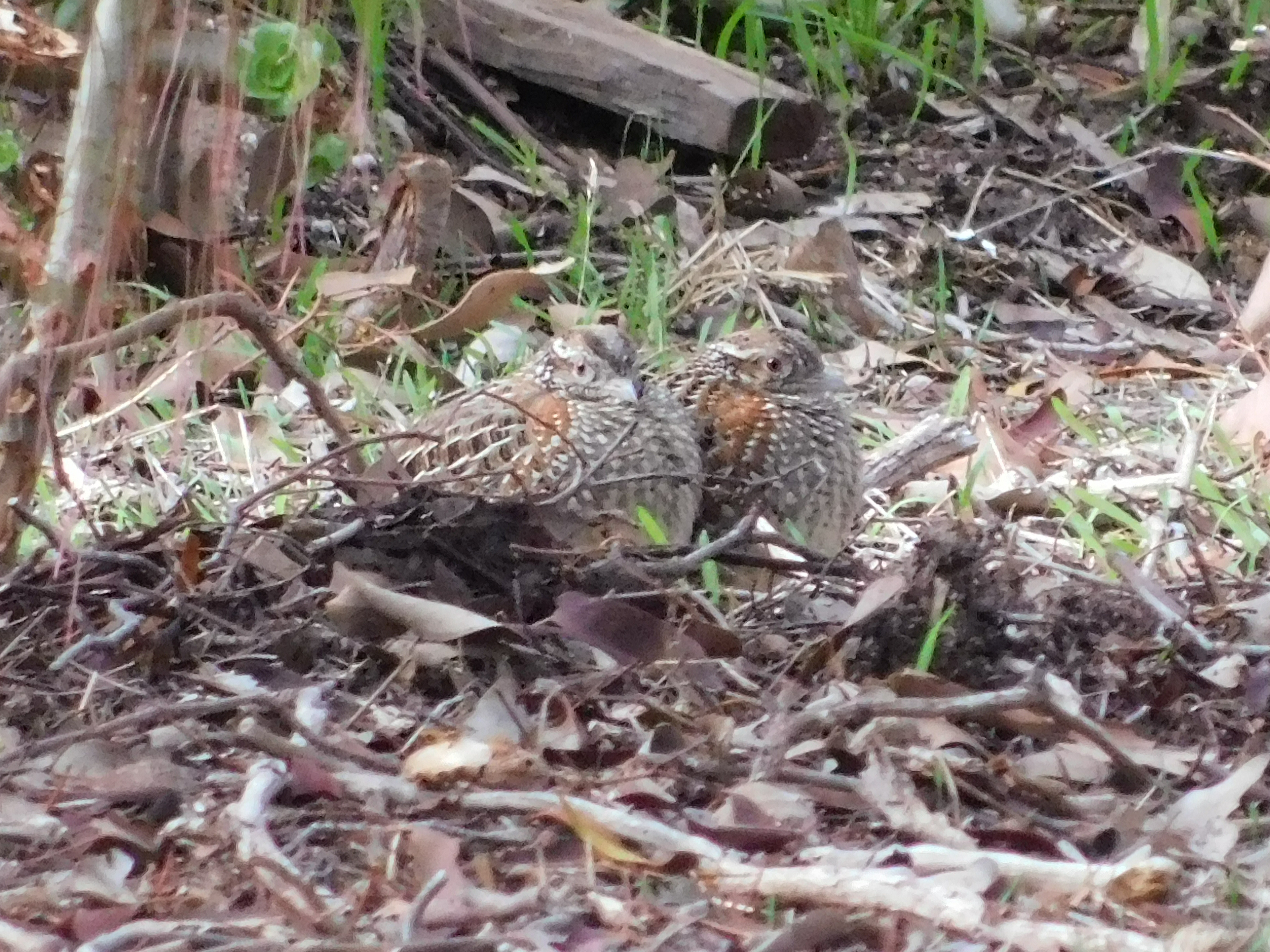AGM in the bush – Golden Point Landcare
Posted on 2 August, 2018 by Asha
This is how you do an AGM! Join Golden Point Landcare for their hands-on outdoor AGM, and be treated to a gift to take home as well (a free indigenous plant). Everyone is welcome to come for all or part of their AGM this Sunday 5th August, with cutting and painting of gorse at 10am, morning tea in the bush at 11am, and “pick a present” at 11:30am.
Park at the Chapel/Welsh Street corner in Golden Point. BYO secateurs and gloves. Dabbers and herbicide will be provided.
Contact Jennifer on 0423 900 590 to RSVP for catering or for more info. CLICK HERE to download the flier.
Vote for our local Landcarers in the National Landcare Awards
Posted on 2 August, 2018 by Asha
How amazing is this?! We have two local finalists for the National Landcare Awards.
The Tarrangower Cactus Control Group is the Victorian finalist in the National Landcare Community Group Award and Ian Higgins is the Victorian finalist for the Australian Government Individual Landcarer Award.
Please CLICK HERE to go to the link and vote for our locals in the awards to give them the recognition we know they deserve! Voting closes October 10th 2018.
The award will be presented at the National Landcare conference in Brisbane in early October.
Small bush bird habitat created at Bradford!
Posted on 30 July, 2018 by Tanya Loos
What a difference a couple of years makes! Last Thursday, 26 July 2018, Bonnie, Frances and Tanya had the great pleasure of visiting Kerri Peacoulakis’ property in Bradford to marvel at the growth of native plant species at their direct seeding site, and also chat about bird surveying. Below is a photo of part of the site taken in September 2016, about one year after direct seeding.
Below is the same site, taken in the same direction. Note the large eucalypt with the wide crown in the left hand side of the photo.
The site was direct seeded in 2015, as part of Connecting Country’s Habitat for Bush Birds project. It is amazing to think that there are many tiny young plants fighting for survival under all the prolific capeweed in the first photo! The site is a bird survey site called NW-PR-03, a northwest paddock revegetation site. The direct seeding is even more successful looking in the other direction, towards the Blue Hills area.
In the above photo, Bonnie is using a trundle wheel and a counter to carry out a direct seeding success count. These counts measure how many plants have grown, giving a standard measure of trees/shrubs per metre count. This number is comparable from site to site, and enables us here at Connecting Country to monitor the growth of our direct seeding from year to year.
The plant species in the direct seeding included a mix of local wattles, eucalypts, she-oaks, hop bush, and hakeas.
Kerri is taking on the bird survey site, by surveying the site four times per year. During our visit, we conducted a 20 minute 2 hectare count, with Kerri entering the data on her Birdata app on her smartphone. So simple! During the survey, we saw many open country species such as Red-rumped parrots, Welcome swallows and Australian magpies. Kerri said that she had observed Superb fairy-wrens on the site – a true mark of success as these little birds are NEVER recorded in a bare, open paddock! Well done Kerri and also her partner Tusker and family for a fantastic project!
Nest box adventures: a community effort in 2018
Posted on 19 July, 2018 by Asha
In May 2018, Connecting Country once again completed monitoring of our nest boxes. This was the fourth time we’ve checked the boxes since they were installed the Mount Alexander region in 2010/11. This year, we were lucky enough to have help from Beth Mellick from the Wettenhall Environment Trust and Jess Lawton from Latrobe University.
Beth, Jess, and Asha tag-teamed going out with many fabulous volunteers to check the 300 nest boxes that are part of CC’s official monitoring program. For each box, we recorded information about which species were using it, either by identifying a living animal or by looking at the nest in the box.
The boxes were installed to provide crucial habitat for Brush-tailed Phascogales, but they also attract other animals like Sugar Gliders and invasive Honeybees. We also collected data to update our existing information on the box’s context in the environment (tree size, tree species, patch size, etc.). We are working on inputting all of this data into our database for analysis so we can compile a report with some results to share.
Thank you to all of the amazing people who volunteered their time to help this year: Jeremy, Lori, Naomi, Bev, Paul, Gayle, Carmen, Mal, Damian, Frances, Lachlan, and Meg. A big thank you also to the hundred or so landholders who continue to host our nest boxes on their property, and allow us access for monitoring.
Special thanks go to Beth, Jess, the Wettenhall Environment Trust, and Latrobe University for their support and for making this year’s nest box monitoring possible.
For more information about Connecting Country’s nest boxes and past monitoring, CLICK HERE.
It’s planting season! Understorey enhancement underway…
Posted on 17 July, 2018 by Tanya Loos
It is the height of winter, and the peak planting season is drawing to a close. We’re very happy to be distributing plants to landholders participating in our on-ground works projects. The plants pictured below are a range of native understorey plants that will add diversity and habitat quality to existing remnant vegetation.
Landholders involved in our ‘Prickly Plants for Wildlife’ project are planting their own plants. Landholders from our ‘Woodland Bird Habitat’, ‘Remnant Rescue’ or ‘Biodiversity On-ground Action’ projects are receiving assistance from the Dja Dja Wurrung works crew, known as Djandak. These projects are made possible by funding from the Victorian Department of Environment, Land, Water and Planning, and the North Central Catchment Management Authority.
Young plants need protection while they get established. Previously we used milk carton guards and bamboo stakes in our planting programs. Now we use coreflute guards and hardwood stakes, as these provide more protection against grazing wallabies, and are less likely to get knocked over by commuting kangaroos.

The Little Habitat Heroes planting site on Mount Alexander, by the old silkworm farm. Coreflute guards and stakes have worked very well on this site, resulting in high rates of plant survival.
Connecting Country is always looking for landholders interested in protecting native vegetation and wildlife habitat on their properties. Check out the on-ground works section of our website for more information, and to download an Expression of Interest form.
Come and hear about Scientific monitoring at Connecting Country: a community effort – Friday 13 July 2018
Posted on 12 July, 2018 by Tanya Loos
Castlemaine Field Naturalists Club is hosting a guest speaker, our very own Tanya Loos, talking about Scientific monitoring at Connecting Country: a community effort.
Woodland birds, arboreal mammals, frogs and reptiles – what can these critters tell us about landscape health? Tanya Loos, Connecting Country’s Monitoring and Engagement Coordinator, talks about the organisation’s long term monitoring programs – how and why they were created, and what we have found so far. There will be a special emphasis on the contribution volunteers have made to the program’s success.
Tanya has worked with Connecting Country for four years, and whilst mainly a birdo, is also a field naturalist and science writer. She lives on a bush block in Porcupine Ridge with her husband, dog and a number of rescue budgies and cockatiels.
The evening event will be from 7.30 pm on Friday 13 July 2018 in the Fellowship Room (behind the Uniting Church on Lyttleton St, Castlemaine VIC, next door to the Castlemaine Art Museum). There is no cost for entry, and both members and visitors of all ages are welcome and encouraged to attend. We look forward to seeing you there.
The talk will be followed by an field excursion at 1.30 pm on Saturday 14 July 2018.
The excursion will be to Cullen Gunn’s property in Otterys Scrub Rd, Walmer. Cullen’s property is a former grazing property with many large old trees, and an extensive revegetation program involving three separate projects with Connecting Country. We will be able to see direct seeding revegetation in various stages of regrowth. The site has a long term bird survey site, and has recently been colonised by a population of Brush-tailed Phascogales, a sure measure of success!
Depart at 1.30 pm from the car park opposite the Castle Motel on Duke St, Castlemaine (next to the Octopus building). Bring afternoon tea, raincoat and suitable footwear.
BirdLife Castlemaine District launch and Swift Parrot conservation
Posted on 10 July, 2018 by Tanya Loos
Many excited faces gathered at the Castlemaine Botanic Gardens Tearooms on Saturday 7 July 2018, as we celebrated the launch of BirdLife Australia’s newest branch – BirdLife Castlemaine and District. The launch also incorporated an ‘Act for Birds’ Roadshow – a community forum on how we can encourage stronger environmental laws to help safeguard threatened species such as the Swift Parrot.
We began the afternoon with a Welcome to Country from Uncle Rick and Kane, and Uncle Rick talked about the significance of birds to the Dja Dja Wurrung. Fiona Blandford (Branch Network manager) and Jane Rusden (BirdLife District Convenor) formally launched the new branch, with a lovely nod to Connecting Country and our work to build community interest in birds on our region.
Brendan Sydes (Connecting Country president), in his role as lawyer and CEO of Environmental Justice Australia, gave a rousing introduction to the potential for positive change to environmental laws in this country.
Beth Mellick (of Wettenhall Environment Trust) is the regional coordinator for the local Swift Parrot counts done twice a year. Beth gave a wonderful talk on our local swifties and the power of citizen scientists, including showing an excerpt from Debbie Worland’s DVD, the Swift Parrots of Muckleford in Central Victoria. The DVD shows never-seen footage of Swift Parrots filmed entirely in Muckleford over a five-year period by Debbie Worland, a member of the Castlemaine Field Naturalists Club. For infomation about the DVD, email swiftparrotsofmuckleford@hotmail.com. If you would like to be involved in the Swift Parrot count later this year, email Beth at beth@wettenhall.org.au.
We then heard from our main speaker – Kim Garrett (Conservation Community Organiser for BirdLife Australia). Kim spoke passionately and eloquently on how our current laws are failing threatened species in Australia, and what we as community members can do about it. Many policy and environmental law experts have prepared a detailed case for how environmental laws could be strengthened in our country, and the Act for Birds campaign summarises the case succinctly.
In a nutshell, the campaign calls for us to:
- Create national environment laws that genuinely protect our unique birdlife.
- Establish independent institutions that set national environmental standards, and operate transparently and independently of government.
- Guarantee community rights and participation in environmental decision-making.
To get involved, head on over to www.actforbirds.org to sign the petition and get some tips on engaging with your local member.
The Swift Parrot is Critically Endangered and numbers are still declining due to serious loopholes in current environmental laws. The current laws are up for a twenty year review, so now is an ideal time to act.
Please enjoy this gallery of photos of some of the attendees. Many thanks to the staff from BirdLife for travelling to Castlemaine to share in the excitement, to the committee and volunteers of BirdLife District Castlemaine for planning and logistics, Uncle Rick and Kane, the presenters, and to Jane Rusden for pulling the whole event together!
The contact email for the new branch is castlemaine@birdlife.org.au and our new Facebook page is BirdLife-Castlemaine-District
For a great overview of the Swift Parrot and the ‘Act for Birds’ campaign, see this article in the Bendigo Advertisor: renewed-focus-to-save-castlemaines-migratory-parrots/
National Tree Day – 29 July 2018
Posted on 28 June, 2018 by Frances
About National Tree Day
National Tree Day is Australia’s largest tree-planting and nature care event. Tree Day is an opportunity to do something positive for your local environment and community, and reconnect with nature. National Tree Day started in 1996 and since then more than 4 million people have planted over 24 million trees and plants and it’s still growing.
National Tree Day aims to inspire, educate and recruit Australians to actively care for our unique land and create future generations of committed environmental custodians.
When is National Tree Day?
Traditionally it is always held in the last weekend in July, as this is the most appropriate day for the majority of regions. The dates for 2018 are:
- Schools Tree Day – Friday 27 July 2018
- National Tree Day – Sunday 29 July 2018
However, if these dates don’t suit, any day can be Tree Day.
So start planning a National Tree Day event, or look out for activities happening in your local area.
For further information about National Tree Day see Planet Ark’s website – click here
BirdLife Celebration and Roadshow – 7 July 2018
Posted on 28 June, 2018 by Frances
BirdLife is coming to town, so put 12:30 – 3:00 pm on Saturday 7 July in your diaries folks. Join us at the Tearoom in Castlemaine Botanic Gardens (2 Walker Street, Castlemaine VIC). There will be celebrations, information on how we, the grassroots, can really make a difference, and an art activity for the kids.
BirdLife is bring its ‘Act for Birds’ Roadshow to Castlemaine, with plenty of ideas on how you and I can make a real difference for the natural environment.
The stunning Swift Parrot needs our help to save it from extinction. (Photo by Chris Tzaros)
Drum roll please …… We have a new group in the area: Castlemaine District BirdLife Branch, for all bird enthusiasts and aspiring bird enthusiasts, as well as those who are just curious or like birds a little bit. On offer will be monthly bird outings, some talks and a chance to meet like-minded people, across all age groups. Come along, find out more and meet some of us.
Jane Rusden, Convener Castlemaine District BirdLife Group
Wildlife Rescue Kits
Posted on 27 June, 2018 by Frances
Connecting Country has put together some Wildlife Rescue Kits to keep in our vehicles, for use should we encounter an injured animal.
It was fun gathering up all the bits and pieces. Many we found at the op-shop or around the office, some we had to purchase.
 The op shop had some beanies, old towels, pillow cases, sheets and blankets. These are all useful to cover a small creature to help it to be calm. Sheets may be needed for larger mammals.
The op shop had some beanies, old towels, pillow cases, sheets and blankets. These are all useful to cover a small creature to help it to be calm. Sheets may be needed for larger mammals.
The storage box with newspaper and a sturdy stick on the bottom doubles as a safe place to secure an injured bird.
Before attempting to rescue an injured animal, it’s essential to think about your own safety. We put in some safety equipment, including a fluoro vest, sturdy gloves, disposable gloves and hand sanitiser. There’s a water bottle and cotton cloth to clean up and wash hands with afterwards.
Some useful things we included:
- A
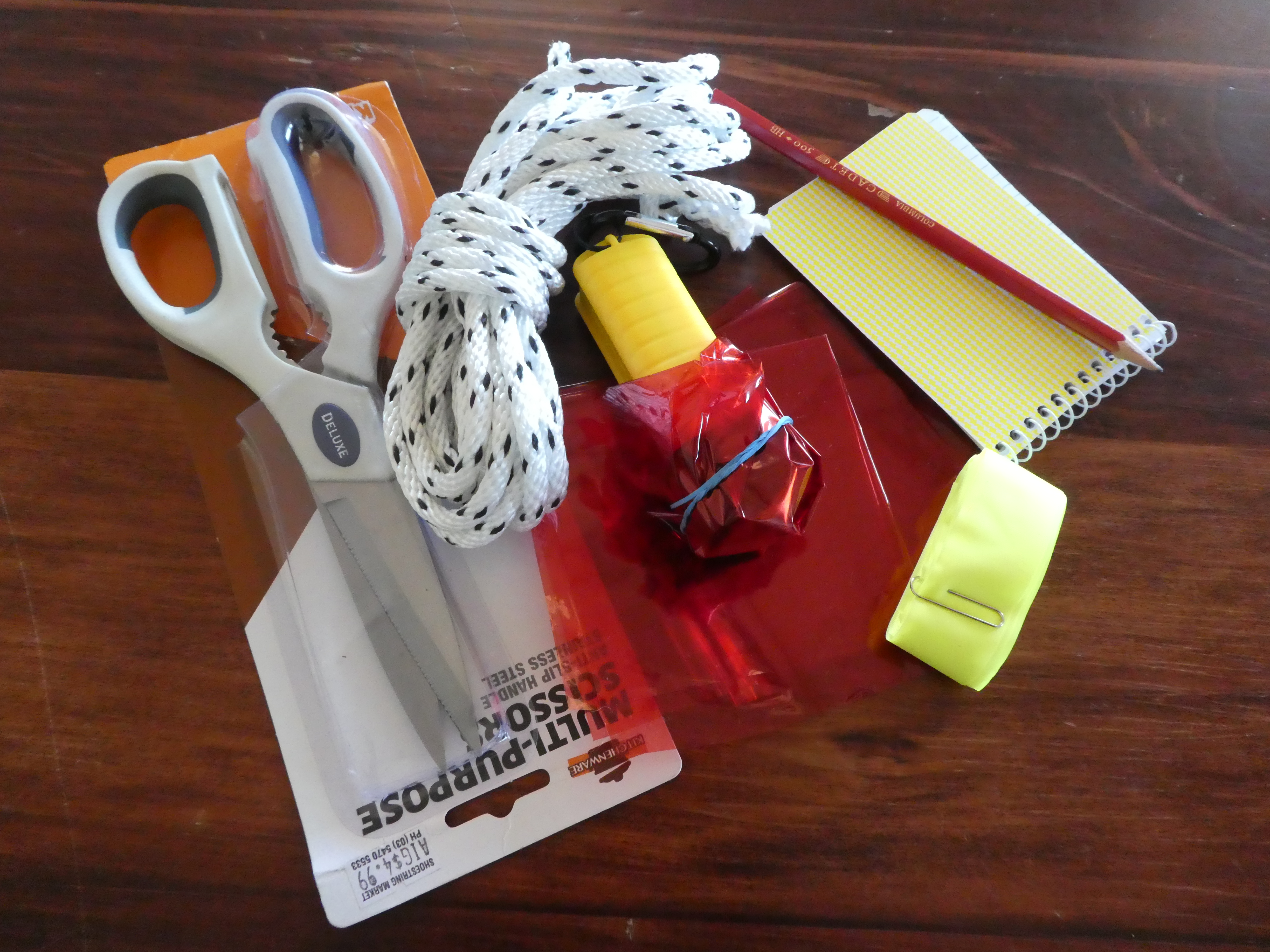 list of numbers to call and things to consider before handling injured wildlife (for our list see wildlife-rescue-numbers-to-call)
list of numbers to call and things to consider before handling injured wildlife (for our list see wildlife-rescue-numbers-to-call) - Flagging tape for tying to a tree to mark the location in case you can’t stay
- Soft rope or string
- Newspaper
- Sharp kitchen scissors
- Pad and paper
- Torch and red cellophane
Other items that could be included:
- Hot water bottle or heat pack
- Small inexpensive binoculars
- Pliers
We packed it all in a pillow case which fitted well inside an empty office paper box.
Many thanks to Margaret for putting together our kits. If you regularly drive on country roads, you might consider making your own kit. Please take all rescued wildlife to a vet or registered wildlife carer as quickly as possible.
Free disposal of Wheel Cactus at Maldon Transfer Station
Posted on 21 June, 2018 by Asha
The Tarrangower Cactus Control Group (aka Cactus Warriors) has asked us to distribute the following message:
Thanks to ongoing funding from Mount Alexander Shire Council, Wheel Cactus plants can be disposed of FREE at the Maldon Transfer Station. This is a fantastic incentive to dig up Wheel Cactus plants while they’re still small and before they’ve started producing fruit, and more seeds. It also means less herbicide chemicals have to be paid for and used.
Another reminder, if you have any injector guns that are clogged up, no longer working and sitting idle in the shed, please return them to us for repair. Our ‘injector fairies’ love fiddling with the bits and are happy to swap them for a working model. You can bring the old injectors to our next field day or call or text ‘fairy Jan’ on 0400 973 528.
Our next Community Field Day is on Sunday 24 June, starting at 10:30 am. Come and join us for a morning in the fresh air and learn how best to destroy Wheel Cactus. The location this month is in Lakey’s Road, Shelbourne, along the old railway line, about 12 km north of Maldon. To get there, follow Bridgewater Road out of Maldon, turn right at the prison and follow Maldon-Shelbourne Rd. until the end of the sealed road, then turn left into Lakey’s Rd. The route will be well signposted. The morning’s activities end with a delicious BBQ lunch and friendly chat. The event is family friendly but children must be accompanied by a parent at all times. If you have any queries please contact us via our website at www.cactuswarriors.org
Work with Connecting Country – project officer role
Posted on 19 June, 2018 by Frances
Invitation for expressions of interest to work with Connecting Country – Project officer role
We’re announcing an exciting opportunity to work with Connecting Country. With new projects starting and staff leave planned, we’re inviting expressions of interest from people with relevant skills and enthusiasm. This is an opportunity for a hardworking person with experience in natural resource management to join our established community-run organisation.
Connecting Country
Connecting Country works with landholders and community groups to restore landscapes across the Mount Alexander Region, on both public and private land. Further information about our work is available on our website (www.connectingcountry.org.au).
Project officer role
The Project officer is responsible for managing the on-ground aspects of projects. This includes ecological site assessments, property management plans, technical advice, practical assistance with on-ground works, and support to landholders to help them protect and manage remnant vegetation and habitat on their land. Typical management actions include grazing exclusion, fencing to protect natural regeneration, revegetation, and control of pest plants and animals.
This is a flexible part-time role (up to four days per week) based in Castlemaine, Victoria. It is a short-term (ten month) contract position, with contract extension subject to funding availability.
This position requires the ability to:
- Identify local native and introduced flora species.
- Engage and communicate with people from a range of backgrounds.
- Write clearly and concisely.
- Work independently and as part of a team, being flexible as the situation demands.
- Manage time and workload, managing multiple projects and tasks simultaneously to meet deadlines.
- Exercise good judgment, make ethical decisions and set priorities.
- Drive a manual four-wheel drive vehicle and tow a trailer (with training if required).
Tasks will include:
- Engage landholders, Landcare groups and other community members regarding projects.
- Visit properties across the Mount Alexander Shire to assess their suitability for inclusion in our projects.
- Conduct ecological assessments of properties, interpret ecological mapping, record plant species lists, assess weeds, and prepare planting lists.
- Identify and recommend management actions to protect remnant vegetation, and promote biodiversity and habitat quality.
- Help develop and manage project budgets and schedules.
- Manage contractors to implement on-ground works such as fencing, revegetation, and weed and rabbit control.
- Prepare property management plans describing the property condition and proposed management actions, to help landholders manage their properties for wildlife.
- Prepare simple maps using Google Earth or other mapping software.
- Manage ordering and delivery of tubestock plants for revegetation.
- Provide advice and ongoing technical support to landholders.
- Implement project health and safety requirements.
- Communicate with team members, land managers, community groups, contractors and suppliers as required.
- Prepare clear, timely and informative reports on project activities.
How to express interest
Please provide your written expression of interest by email to info@connectingcountry.org.au by 1 July 2018, including a brief application letter summarising your suitability for the role and curricula vitae demonstrating your relevant skills and experience.
For further information contact Frances on 03 5472 1594 (Monday to Thursday) or info@connectingcountry.org.au.
Powerful Owl Chat – Thursday 28 June 2018
Posted on 19 June, 2018 by Tanya Loos
Come along and share stories about Powerful Owls at a ‘Powerful Owl Chat’ in Maldon.
Garry Cheers will tell us about Powerful Owl food, habitat, breeding, behaviour and giving owls space during breeding season. Geoff Park will show owl images and talk about what you can do to connect with your local environment.
Bring along your photos and owl knowledge to share. There will be plenty of opportunity to ask questions and share observations. All welcome.
Thursday 28 June 2018 from 7.00 – 8.30 pm
Maldon Neighbourhood Centre (1 Church St, Maldon VIC)
For inquiries please contact Forest Keegel on 0402 035 521 or forestkeegel@gmail.com
Makarrata Garden Tarrangower MaGaTa is happening on Dja Dja Wurrung Country in Maldon. It’s a a community engaged sculpture project to research habitat of Powerful Owl and Duan (Brush Tailed Phascogale), and educate ourselves about the history of Dja Dja Wurrung people and celebrate their living Culture.
CC Membership Renewal for 2018-19 – now available online
Posted on 19 June, 2018 by Tanya Loos
Connecting Country’s membership renewal drive for the 2018-19 has commenced, and we are happy to announce that it is simpler than ever. By following this secure link (CLICK HERE) or by following the secure links from our home page, you can now renew your membership online in a couple of minutes.
Connecting Country membership is free and has lots of benefits. Being a member:
- Demonstrates your support for our activities, and our work towards an increasingly healthy natural environment within the Mount Alexander Region. The support of good membership numbers is critical when we apply for grants and other external support.
- Provides insurance cover when you attend our events.
- Allows you to vote at our Annual General Meeting – planned for October 2018.
- Provides free access to our events and resources, including borrowing monitoring equipment.
Please encourage friends and contracts who are interested in the local environment to consider becoming a member. For people applying to become members for the first time, please use the same form. New applications will then be presented at the next monthly Committee of Management meeting before your membership is formalised.
If you would prefer a hard copy membership form instead, please contact us (info@connectingcountry.org.au) to request an emailed PDF or a posted form.
Fungi presentation and excursion with John Walter – Friday 8 June 2018
Posted on 6 June, 2018 by Tanya Loos
The guest speaker for the June general meeting of the Castlemaine Field Naturalists Club is Drummond-based naturalist, John Walter. His presentation is about FUNGI: the rare and the where and how you can make a difference.
John writes:
‘I have an extensive library and will bring some of my collection of fungi books with me for members to examine. I would also like to demonstrate some of the web-based resources available for people to use. FungiMap has a focus on some rare or rarely seen species and I have been fortunate enough to make some very interesting fungal finds so they will form a key part of the presentation and I will also show some of the incredible fungal diversity to be seen in our region.’
John’s presentation is on Friday 8 June from 7.30 pm in the Fellowship Room on Lyttleton St, Castlemaine VIC (behind the Uniting Church, next door to the Castlemaine Art Museum). There is no cost for entry, and both members and visitors of all ages are welcome and encouraged to attend.
John will also kindly lead the excursion the following day, to search for fungi in the field. The destination is likely to be at Blackwood, but this is to be confirmed at the meeting on Friday evening.
The excursion will depart on Saturday 9 June at 1.30 pm sharp from the Octopus U3A building on Duke St, Castlemaine (opposite the Castle Motel). Car pooling will be available, and please bring along some afternoon tea. Again, visitors and members all welcome and encouraged.
For further information please contact Castlemaine Field Naturalists Club.
Nest box workshop # 2 – Sunday 17 June 2018
Posted on 6 June, 2018 by Tanya Loos
If you already own nest boxes, or want to set some up on your property, come along to a workshop with nestbox builder and naturalist Miles Geldard. Our nest box workshop in May was extremely popular, so we are holding another similar event, but at a different location.
This workshop will be held at a beautiful Trust for Nature property at Sedgwick, north of Castlemaine. Miles Geldard will shares his extensive knowledge on the design, construction, installation and monitoring of nest boxes for wildlife. Landholder Tamsin Byrne, and Connecting Country’s Tanya Loos, will also talk briefly about habitat restoration and local birdlife. The event includes a light lunch, indoor presentation and nestbox check using a special camera.
Sunday 17 June 2018 from 10:30 am to 3:00 pm
Please RSVP, including any dietary requirements, by Wednesday 13 June to Tanya Loos by email (tanya@connectingcountry.org.au) or phone (03 5472 1594).
Attendance is free. We also have a very special door prize for a lucky attendee!
A map to the workshop location will be provided when you book.
As this is a partly outdoor event, please dress warmly, and wear shoes and clothing appropriate for walking in the bush. In the event of severe weather we will hold the workshop inside.
Camp Out on the Mount 2018 (minus the camp out)
Posted on 30 May, 2018 by Asha
Success! After one and a half Camp Outs cancelled due to severe weather warnings, we were at last able to run most of the activities we had planned on Saturday 12 May.
It was a chilly day, but a warm fire provided by Parks Victoria created a cozy space to gather. Early birds Duncan and Frances were up on the mount before anyone else making sure the kettle was going and we had hot drinks available all day long.
We kicked off the day with a nature walk with Connecting Country’s Bonnie Humphreys. Before even leaving the campground, we were lucky to see both Scarlet and Flame Robins enjoying the sun that peeked through the clouds. We came back in time to listen to George Milford’s famous talk on the history of Mount Alexander.
MP Maree Edwards then launched the new Camp Out on the Mount 2018 t-shirt with Nick and Murray from Castlemaine Secondary College, who designed the t-shirts with fellow students Nioka and Des. There are a limited number of free Camp Out on the Mount 2018 t-shirts left in sizes XS, L, and XL. If you would like one, please email asha@connectingcountry.org.au or drop into our office.
Next up was something a little different from the Little Habitat Heroes and the Macapellas. After treating us to their rendition of Eva Popov’s ‘Seeds that grow’ (song written about the Little Habitat Heroes revegetation project on Leanganook) they invited everyone to join in singing around the campfire.
Our afternoon activities were a wildlife display by TZR Reptiles and Wildlife, and a Leanganook Scavenger Hunt run by Nioka, Nick, and Murray. The wildlife display went down a treat, with the Carpet Python and Barn Owl being special favourites (as you can see from the smiles in the photos below!) The scavenger hunt was challenging and fun, with bonus points for those who came up with a name for their Landcare Superhero Team!
As a perfect finish to the day, the Mellick-Cooper family set up a damper making station and got everyone cooking damper over the coals, which were now glowing and ideal for this purpose.
So many people helped make this event possible, we almost need a whole other blog post dedicated to thank yous! We have many community groups and individuals to thank for making the 2018 Camp Out happen, both on the day and behind the scenes, including the Camp Out Advisory Group, Harcourt Valley Landcare, Little Habitat Heroes, MP Maree Edwards, the Mellick-Cooper family, Parks Victoria, Friends of the Box-Ironbark Forests, Nalderun Upper Loddon Group, Dja Dja Wurrung Clans Aboriginal Corporation, Castlemaine Secondary College students (Nioka, Nick, Murray, and Des), Harcourt Lions Club, Tarrangower Cactus Control Group, TZR Reptiles and Wildlife, the Connecting Country team, and all those who stepped up to help out on the day.
Scroll through to enjoy a gallery of photos from the day.
This year’s Camp Out on the Mount is supported by funding through the Victorian Landcare Program. Our nature walk was supported by DELWP’s Biodiversity On Ground Action (BOGA) program.
Joint Management Plan for the Dja Dja Wurrung Parks: provide feedback
Posted on 30 May, 2018 by Tanya Loos
Community groups and individuals are invited to take part in community consultation regarding a joint management plan for six parks in Central Victoria.
From the Parks Victoria website:
Parks Victoria has a vision to manage all parks in their surrounding landscapes, in partnership with Traditional Owners, and other government and non-government organisations and community groups. Parks Victoria is currently supporting the Dhelkunya Dja Land Management Board to involve the community in developing a plan for the joint management of the six Dja Dja Wurrung Parks held by the Dja Dja Wurrung People as Aboriginal Title.
The Draft Joint Management Plan for the Dja Dja Wurrung Parks covers the following parks:
- Greater Bendigo National Park
- Hepburn Regional Park
- Paddys Ranges State Park
- Kara Kara National Park
- Kooyoora State Park
- Wehla Nature Conservation Reserve

Dja Dja Wurrung Traditional Owners meeting on Country in 2017 to participate in the planning for the Dja Dja Wurrung Parks
It is expected that this joint planning process will extend to other parks within the Mount Alexander Shire in the future.
To read the plan, make a submission, or access an online survey about the plan, click here: Dhelkunya Dja Land Management Board
All submissions must be made by 19 June 2018.
Painted Button-quails in the garden
Posted on 29 May, 2018 by Tanya Loos
Connecting Country staff member Bonnie Humphreys has seen small, quail-like birds wandering around her garden for weeks, even on her doorstep. Until now, they’ve escaped Bonnie’s efforts to capture a photo and confirm identification as Painted Button-quail! The two birds seen here were resting quietly together.
Button-quails are a truly Australian group of birds. Although they look a lot like quails, DNA analysis suggests that button-quails are quite distant from all living groups of birds. Their behaviour is certainly very unusual!
Unlike most birds, it’s the brightly coloured female who calls, and attracts a male. They are polyandrous, with one female mating with several males in an area. After mating, the female builds a domed nest near the ground in a shrub or grass tussock, and lays three or four small white eggs. The male then incubates the young until hatching. Once hatched, the tiny little chicks fledge right away and the male feeds them for the next ten days or so. After this, the young button-quails can fend for themselves.
The birds pictured above could be either males, or immature birds. In females, the reddish patch is brighter. However, the depth of the colour red is quite variable according to light conditions and the position of the bird. Hence it’s quite tricky to identify the sex of the bird. (Happy to hear local birder expert opinion on this one!)
Bonnie’s visiting button-quails are a group of three birds, and the Handbook of Australian and New Zealand birds says they are most often seen in small family groups. At this time of year, breeding has finished, so maybe they are just being companionable and foraging together until the female starts her ‘booming’call.
Their foraging technique is also most unusual. Painted button-quails often feed in pairs, in grasses and leaf litter on the ground. They scratch and glean, spinning on alternate legs to create distinctive circular depressions, known as platelets. Platelets are often the only visible sign that the bird is present. The photo below shows the typical look of platelets in bushland with plenty of leaf litter.
There’s been extensive feeding activity in leaf litter and lawn areas at Bonnie’s place. It was hard to capture on camera the sheer extent of the ground being worked over by these enthusiastic little birds.
Painted button-quails are a member of the threatened Victorian Temperate Woodland bird Community. They are notoriously difficult to capture during typical (20 minute, 2 ha) bird surveys, so we welcome any sightings and observations. You can download a sightings sheet here, and let us know where and when you’ve seen button-quails, or their platelets.![]()
In 2011, Echidna Walkabout Tours captured this amazing footage of a Painted Button-quail foraging in leaf litter in urban Port Melbourne! Do watch the whole video because at the end the female puffs herself up like a frog and starts calling her booming call. The low frequency call is difficult to hear on the video, but you can see the amazing behaviour!
Come frogging for World Environment Day – 5 June 2018
Posted on 23 May, 2018 by Tanya Loos
Celebrate World Environment Day 2018 with local ecologist Karl Just and Connecting Country on a special evening ‘frogging’ workshop.
Karl Just will share his extensive knowledge of our local frogs, and help participants learn how to identify frogs by their calls, and by sight. The evening will also cover how we can look after frogs and their habitat. The workshop is free, and includes hot drinks and snacks and a frog identification guide.
When: Tuesday 5 June 2018 from 4:30 to 7:30 pm
Where: Meet out the front of Newstead Community Centre (9 Lyons St, Newstead VIC) and carpool to a private property in Strangways
What to bring: Sturdy shoes, long pants, warm and weather-appropriate clothes, torch (as it will be dark around 5:30 pm)
The workshop will be strictly limited to fifteen participants so make sure you book!
RSVP: to Asha by Monday 4 June to asha@connectingcountry.org.au
Enquiries: (03) 5472 1594





